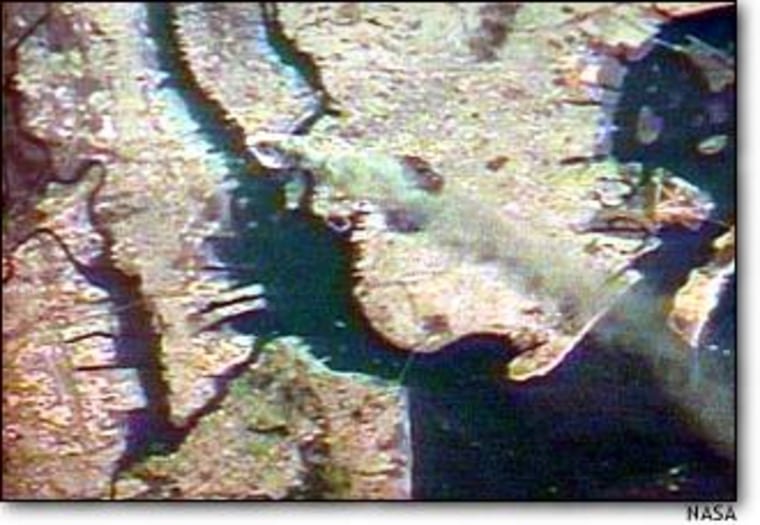What’s life really like on a space station? For years, astronauts have been telling kids about the ups and downs of life in orbit. Listen to the highlights from broadcasts aired via MSNBC.com.
InsertArt(1813982)THE CREW of the international space station let some grade school students in on a dirty little secret Thursday — they change their clothes only once a week.
The three crew members — commander Kenneth Bowersox, science officer Don Pettit and Russian flight engineer Nikolai Budarin — answered questions on everything from space food to hygiene during a 20-minute broadcast interview by students from Glenwood Elementary School near Toledo, Ohio.
“We don’t wash our clothes,” Pettit said in response to a question. “We’ll wear a change of clothes for about a week.”
Bowersox told the students that each crew member gets five pairs of running shorts, five T-shirts, 12 pairs of underwear, eight pairs of socks, a pair of regular shorts and a pair of pants.
No, crew members can’t bring their own clothes from home, said Budarin in response to a question.
“I prefer to wear T-shirts and shorts everyday,” Budarin said.
Crew members wash with wet towels, Pettit said. There is a limited water supply on the station, 240 miles (400 kilometers) above Earth.
“Up here, the air temperature is always the same temperature and we only sweat when we work out,” Pettit said. “The only thing that really gets smelly is our workout clothes.”
There are no washing machines on the international space station, so dirty clothes are simply discarded, typically by putting them in the cargo capsules that bring up supplies and then are eventually cut loose to burn up in the atmosphere. When the shuttle fleet is operating, the duds are brought down to Earth along with other trash.
The crew members said the best part about living on the space station was being able to float and seeing Earth from space.
“The earth is an amazing sight in space. ... You can see all the continents and land masses and the oceans,” Pettit said. “It’s like learning your geography from the best atlas you could possibly have.”
Thursday’s chat with students was organized by NASA, using the station’s main audio and video hookups. But there’s another channel available for school chats: the station’s amateur-radio link, which was established with the assistance of a volunteer group called Amateur Radio on the International Space Station.
MSNBC.com has helped amateur-radio volunteers transmit space station chats over the Internet since mid-2000. Here are selected audio clips from Russia’s Mir space station and from the expedition crews who have occupied the international space station:

Oct. 18, 2001 - Commander Frank Culbertson speaks with students from Houston’s Armand Bayou Elementary School, where his son and daughter go to school.
leftmsnbc/1223000/1223381.jpg33022300http://media2.s-nbcnews.com
Image: Culbertsonfalsefalse
Make Space.MSNBC.com your launch pad.